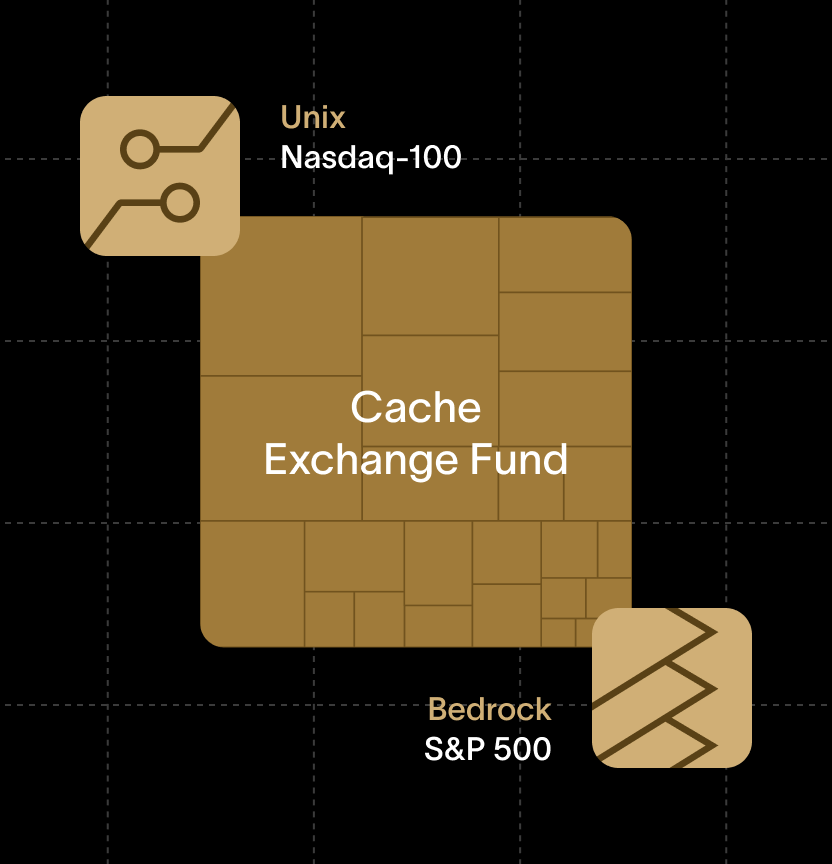Stock lending: How to earn passive income from your stocks
If you own a large position in one or more stocks, lending your shares can be an easy way to earn passive income from your idle investments. Stock lending programs give you cash payments every time your shares are lent out, which you can reinvest, put toward diversification, or spend on other expenses. You won’t have to sell any shares, so you can participate without disrupting your long-term investment strategy.
If you’re intrigued, you’re in the right place. Within the next few minutes, we’ll explain the nuts and bolts of how stock lending works, the major benefits you can expect, and a few drawbacks to watch out for.
Almost all brokerage firms do this one way or another. However, you might not have realized that your shares are being lent out (or received any income from them). We want to make sure you can make the most of the stock you’re holding.
What is stock lending?
Stock lending is when another investor temporarily rents some stock from you. They borrow your shares and pay you a fee for lending to them. There’s no term or lockup, and the lending rate is essentially renegotiated each day based on the market demand.
Stock lending is a common practice that’s been available in the US in some form for at least 100 years – and possibly a lot longer.
You don’t sell your stock to participate, so no capital gains taxes are triggered. You merely have a little more money in your pocket from the idle shares in your portfolio. Stock lending is also known as “securities lending,” as the practice is common across stocks, bonds, and fund shares.
The only major requirement on your end is that the stock you loan must be “fully paid,” which means that you fully own the stock yourself – not purchased on margin or borrowed.
How does stock lending really work, though?
We now understand your experience when you loan out a stock, but there’s a lot more going on behind the scenes. The investor on the other side of the loan is usually a large financial institution, and a third-party lending agent, like a brokerage or custodian bank, facilitates the transaction.
Before they receive your stock, the borrower puts up collateral in cash or treasury bills – typically 102% of the value of shares borrowed. This collateral serves as protection in case the shares are not returned. Each day, the collateral requirement is re-evaluated (or “marked-to-market” in investment parlance) as the stock’s price fluctuates. This requirement minimizes default risk.
Your shares are then lent to the borrower for a set period, with the contract reset daily. Rates vary based on demand for the stock and how difficult the shares are to borrow. Hard-to-borrow stocks typically earn higher fees. Rates can vary from a few basis points to 5% or more– we’ll take a closer look at the rates you receive later in this piece.
You maintain full ownership rights on the shares you loan out. Any dividends the borrower receives are forwarded to you (and treated as ordinary income by the tax code). You can also sell at any time, at which point the stock is recalled and the loan canceled. When the term of the loan is complete, you’ll receive the same number of shares that you lent initially. Any returns or losses those stocks experience over the course of the loan will still be yours.
How Much Extra Income Can You Earn?
The amount of income you generate from a stock loan depends on two primary factors:
- Lending rates: The loan rate is dynamic and based on how hard the stock is to borrow. If there isn’t enough supply of a stock investors want to borrow, rates go up. If the stock is well-supplied, the rates go down. Typical annualized rates can range from 0.2% to 5%, and it is not uncommon to see heavily shorted stocks reach 100%+.
- The interest rate for the borrower’s collateral: The collateral is typically invested in low-risk liquid investments like treasury bills, which yield additional income.
To calculate potential earnings from stock lending, just add the lending rate to the effective federal funds rate, then multiply that number by the value of the securities you’re contributing. The result approximates how much you might earn in a year.
Stock lending rates can range from a few basis points for easy-to-borrow stocks to over 5% per year for hard-to-borrow stocks. Typically, growth stocks attract more speculators, resulting in higher fees. For example, in 2022, LCID generated the highest revenue, consistently trading at a premium of 5% or more throughout the year. VISA, TSLA, UBER, LYFT, and UPST have been among the best stocks for stock lending in recent years.
You should also keep in mind that the third-party intermediaries who facilitate the transaction charge a commission, leaving you with a split of the revenue generated.
How much can you earn overall?
Let’s look at an example to see how it all adds up.
As an example, imagine you held a $100,000 stock position, which had an annualized loan rate of 2%. Fees are usually paid monthly, so that would mean about $167 a month in income if the lending rate stayed the same. In fall 2023, short term interest rates are close to 5%, which means you’d receive another $416 or so from interest on the borrower’s collateral – or $583 in total monthly income.
And remember that you still technically own the stock, so you’re also benefiting from any appreciation it experiences while on loan.
Hard-to-borrow stocks can earn even higher yields – sometimes two to three times as much as the stocks in this example.
Pros and cons of stock lending
Stock lending gives you passive income from something you already own. In exchange, you take on some risks and limitations. Here’s a closer look at those pros and cons:
The benefits:
Stock lending offers quite a few ways for you to take advantage of your significant equity holdings:
Risks and downsides
All investments carry risks, including the loss of principal. Here are some of the potential downsides you may encounter:
So, is stock lending a good idea? And is it safe?
Stock lending can be a safe and productive investment strategy when done carefully and with a clear understanding of the associated risks. However, like any investment activity, it carries some potential risks that investors should be aware of.
Stock lending is a good fit for long-term investors who do not need intraday liquidity and have a moderately optimistic view of their holdings. The added income simply enhances your overall return without needing to change your core positions.
If you look at the pros and cons in the previous section – or talk them through with an investment advisor – and feel like the upside outweighs the risk, it can be a compelling strategy to include in your portfolio.
Choosing a brokerage for stock lending
If you decide you’re ready to generate extra income by lending out your idling shares, the next step is finding the right provider. Here are key factors to evaluate:
- Fee splits
Look for platforms that pass through most of the lending income to you rather than taking a large cut themselves. As of Nov 2023, most brokerages still pass zero stock lending revenue to clients. - Security and transparency
Ensure robust safeguards around collateral management, borrower vetting, and reinvestment of collateral. - Smooth experience
Look for an easy sign-up process, clear reporting, and the ability to turn stock lending on and off.
Some brokerages currently offer stock lending programs. If you evaluate providers using these three factors, it can help you make an informed decision.
You may want to check out Cache Stock Lending. With fee splits of 60%, an intuitive experience, and institutional backing, we may be able to make it easier to earn passive income. If you have any questions, we’d be happy to get you answers – tell us about yourself and your stock.
Disclosure
<div class="blog_disclosures-text">Material presented in this article is gathered from sources that we believe to be reliable. We do not guaranteed the accuracy of the information it contains. This article may not be a complete discussion of all material facts, and is not intended as the primary basis for your investment decisions. All content is for general informational purposes only and does not take into account your individual circumstances, financial situation, or your specific needs, nor does it present a personalized recommendation to you. It is not intended to provide legal, accounting, tax or investment advice. Investing involves risk, including the loss of principal.</div>
{{black-diversify}}
Detailed Info
Detailed Info
Detailed Info
































